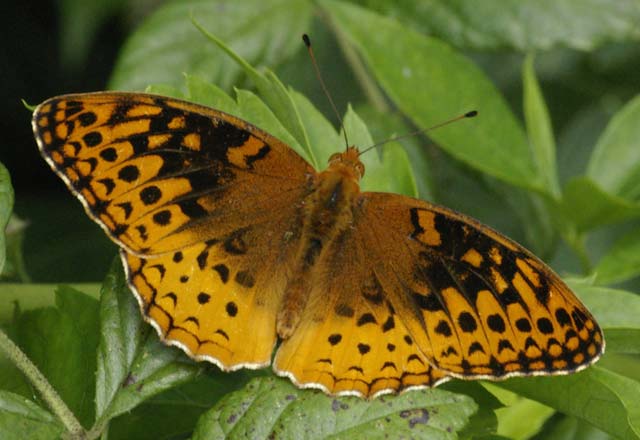
|
A Fritillary and a Pearly-Eye Two Pennsylvania Butterflies | August 28, 2006 |
|
Photographing butterflies is an interesting challenge. A butterfly may panic if I approach within 30 feet, or it may land right next to if not on me.
But the biggest handicap in butterfly photography is trying to identify any of them afterward. The following butterfly is a fritillary (which is a member of the Brushfoot family). The rub is precisely what type of fritillary, and most of them have intense patterns. |

|
|
My guess is that it is a great-spangled fritillary, from the pattern of black circles and crescents on the edge of its wings. However, the Aphrodite fritillary is almost exactly the same, except for a who-knows-where-to-find-it black spot on its wing, but I'm assuming that it is a great spangled (because it is more commonly found here).
In June 2010, I took a series of under-the-wing views of a great-spangled fritillary.
The second butterfly is a pearly-eye (in the subfamily Satyrs). But is it a northern or southern pearly-eye? The southern pearly-eye has an orange "antennal club," whereas the northern pearly-eye has a black base to its orange antennal club. My choice is northern pearly-eye.
| ||
| ||
|
Does anyone wish to consider how this butterfly received the name "pearly-eye"?
Photo note: The photos were taken in July 2006 with the Pentax *1st D and the SMC-A* 200mm macro lens. The great-spangled fritillary is shown perhaps a little larger than life size; the northern pearly-eye is about twice or larger than life size. | ||